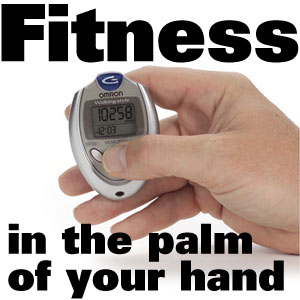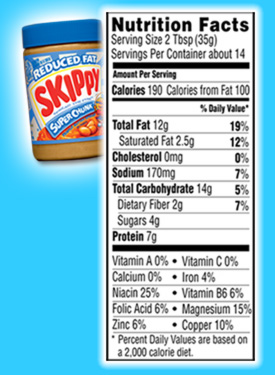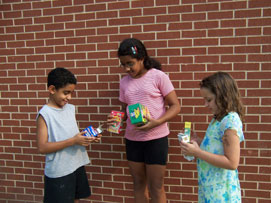|
|
Pedometer Calorie Counting A
WebQuest for
Elementary Students Designed by Jessica
Ricotta Introduction | Task | Process | Evaluation | Conclusion | Credits |
This
project was given to inform Elementary students on the benefits of
counting the number
of calories they burn by the steps taken daily using a pedometer.The pedometer is a
great way to
measure your calories burned determined by the number of steps you take
daily or during an activity. You first calculate your weight and
stride
length which helps determine the distance you've traveled and number of
calories
burned. Wearing a
pedometer is
a great way to track your daily activity and inspire you to move more
and give up at least some of your inactive lifestyles. The 10,000 Steps
a Day Philosophy to achieve good health is when you strive to take
10,000 steps a
day (the equivalent of walking roughly five miles). A person who walks
10,000 steps a day will burn between 2,000 and 3,500 extra calories per
week, which will result in achieving a vastly better health profile and
longer life.
Teaching students how to
read nutrition food labels and what it takes to burn those access
calories off daily, while monitoring it with the use of a pedometer,
are beneficial tools to help a students take
"steps" to a healthier lifestyle.
.
The
instructor will start
the lesson by reviewing a food label with the students so that they
remember how to find the serving size and the calories per serving.
Next, explain that they are going to have the opportunity to pick
out a food label of a particular food that they would like to eat or
one that they
have eaten before. Then the instructor will show them how to put their
weight
into their pedometers. Have a scale out if they would like to weigh
themselves to
see what their exact weight is, but they can estimate if they don't
feel comfortable. This is done to get an accurate approximation of the
total amount of calories burned during an activity. Once they have entered their weight and set their pedometers on the calorie count mode, they are then free to pick out their label. Once they have their label and have found the information about serving sizes and calories per serving, they are free to pick the activities of their choice and get to work on burning those calories off. The challenge is to try to burn the number of calories in one serving of the food that they chose before class is over. This activity is really eye opening experience for some students who don't realize how hard it is to burn calories as well as the number of calories that some of their favorite foods contain. At the end of the lesson discuss whether or not their choice was a healthy one, and if not, discuss what foods may have been a better choice. Also, talk about the fact that if we choose to put those extra calories in our bodies, we are going to have to work harder to burn them.
This chart exemplifies how the students performance and comprehension will be assessed.
After accomplishing the
Pedometer Calorie Counting Challenge, students are able to count the
number of calories that go into their bodies by reading food
labels. They are also now aware of how much work/effort/energy is
needed to burn that amount of calories. Students are also able to
use a pedometer to count the number of steps they take daily or during
a particular activity and record the number of calories burned, and the
distance they've traveled.
This
page was designed and
published by Jessica Ricotta and is solely
responsible for its contents.
|
||||||||||||||||||||||||||||||





